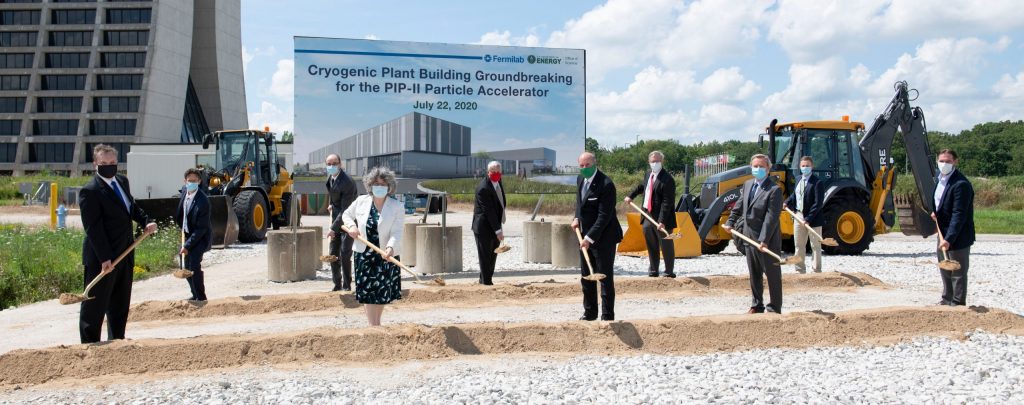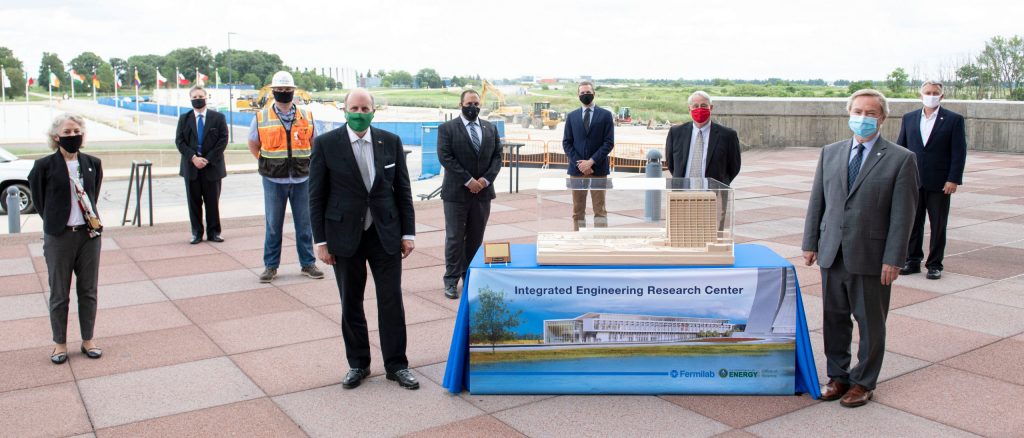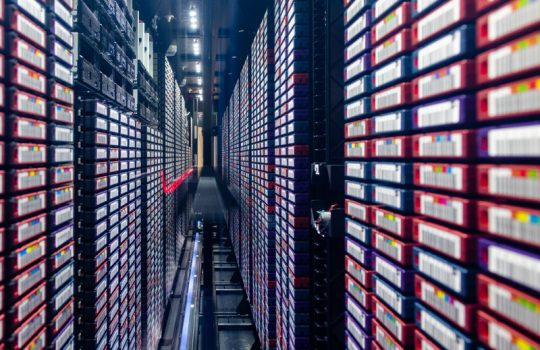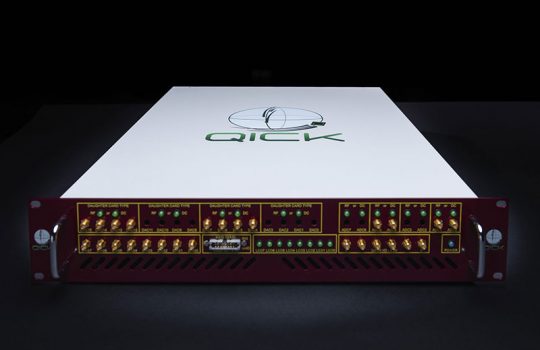Today marked a historic moment for two projects carrying science at the Fermi National Accelerator Laboratory into the future. The U.S. Department of Energy’s Under Secretary for Science joined Fermilab leadership and partners for the pair of milestones: the site dedication of the laboratory’s Integrated Engineering Research Center and the groundbreaking for its PIP-II cryoplant building.
“These world-class facilities at Fermilab are going to drive discovery and a leading research program,” said DOE Under Secretary for Science Paul Dabbar. “It’s an exciting moment in our national labs’ history – and a moment flush with potential for the future.”

Partners break ground on the new PIP-II cryoplant building. From left: DOE Fermi Site Office Manager Roger Snyder, Fermilab PIP-II Project Manager Marc Kaducak, Fermilab PIP-II Project Technical Director Arkadiy Klebaner, Fermilab PIP-II Project Director Lia Merminga, DOE Fermi Site Office Federal Project Director Steve Neus, DOE Under Secretary of Science Paul Dabbar, Fermilab PIP-II Conventional Facilities Manager Steve Dixon, Fermilab Director Nigel Lockyer, Fermilab PIP-II In-kind Contribution Technical Integration Manager Allan Rowe, DOE PIP-II Federal Project Director Adam Bihary. Photo: Ryan Postel, Fermilab
The two projects help usher in a new era of science and support cutting-edge research, including the international Deep Underground Neutrino Experiment hosted by Fermilab. This flagship experiment, powered by the Long-Baseline Neutrino Facility, seeks answers to some of the biggest puzzles in physics through the study of minuscule particles called neutrinos.
“The two milestones today reflect the global interest and investment in neutrino research and advancing technology in service of science,” said Fermilab Director Nigel Lockyer. “We’re excited to push forward on these efforts and to see how we can unlock some of the secrets of our universe.”
The Integrated Engineering Research Center will bring together engineers, technicians and scientists to tackle the technical challenges of particle physics. Nestled next to Fermilab’s iconic Wilson Hall, the building will centralize engineering expertise near the core of Fermilab’s campus. The new space will provide room for collaboration, research, design, construction, and tests of technologies related to neutrino research (including LBNF and DUNE), detectors (such as upgrade projects for the Large Hadron Collider at CERN), quantum science programs, electronics and ASIC (application-specific integrated circuit) development, and more.
“It’s critical that we have a dedicated space to bring together experts from all sorts of disciplines to tackle tough challenges and make breakthroughs,” said IERC Project Director Randy Ortgiesen. “And with reconfigurable spaces within the building, the structure can evolve and support the different needs of the lab as new projects arise.”

Partners join to formally dedicate part of the Fermilab site as the new IERC footprint. From left: Fermilab Chief Operating Officer Kate Gregory, DOE Fermi Site Office Manager Roger Snyder, Fermilab Construction Site Management Supervisor Josh Kenney, DOE Under Secretary of Science Paul Dabbar, Fermilab Facilities Engineering and Site Services Head Mark Jeffers, Fermilab IERC Deputy Project Manager Brian Rubik, DOE Fermi Site Office Federal Project Director Steve Neus, Fermilab Director Nigel Lockyer, Fermilab IERC Project Director Randy Ortgiesen. Photo: Ryan Postel, Fermilab
Just a stone’s throw beyond the engineering center, attendees broke ground on a crucial piece of infrastructure for the lab’s future research program: the PIP-II cryoplant building. The structure will house the cryogenic plant equipment, which includes a cold box, warm compressors and infrastructure for the utilities to support the cryoplant operation. Together, they will keep PIP-II, the new linear particle accelerator, cooled to roughly the temperature of outer space.
The cryoplant receives support from institutions in India, just one example of the internationality of the broader PIP-II program. PIP-II is the first U.S. accelerator project built with major international contributions. Partners in France, India, Italy, Poland, the United Kingdom and the United States are contributing to the centerpiece of PIP-II, a new superconducting radio frequency linear accelerator. The PIP-II project also includes upgrades that will enable Fermilab’s accelerator complex to generate particle beams at higher powers than previously available. Once complete, the complex will deliver a one-megawatt-plus proton beam that will be used to make the world’s highest-intensity neutrino beam for DUNE and enable Fermilab’s science program for many decades to come.
“We are building a state-of-the-art particle accelerator and have been fortunate to have such dedicated collaborators around the world who are making this effort possible,” said PIP-II Project Director Lia Merminga. “PIP-II pushes the limits of technology, and that requires bringing together the world’s best minds to make it happen.”
Find more information on DUNE and LBNF and PIP-II.
Fermilab is America’s premier national laboratory for particle physics and accelerator research. A U.S. Department of Energy Office of Science laboratory, Fermilab is located near Chicago, Illinois, and operated under contract by the Fermi Research Alliance LLC, a joint partnership between the University of Chicago and the Universities Research Association, Inc. Visit Fermilab’s website at www.fnal.gov and follow us on Twitter at @Fermilab.
Fermilab work on DUNE and LBNF is supported by the Department of Energy Office of Science.
Fermilab is supported by the Office of Science of the U.S. Department of Energy. The Office of Science is the single largest supporter of basic research in the physical sciences in the United States and is working to address some of the most pressing challenges of our time. For more information, visit science.energy.gov.



